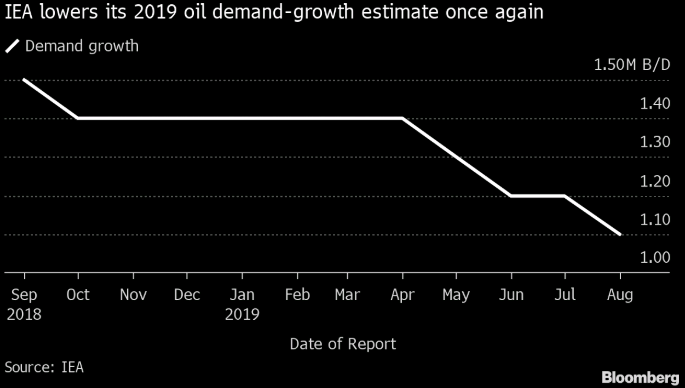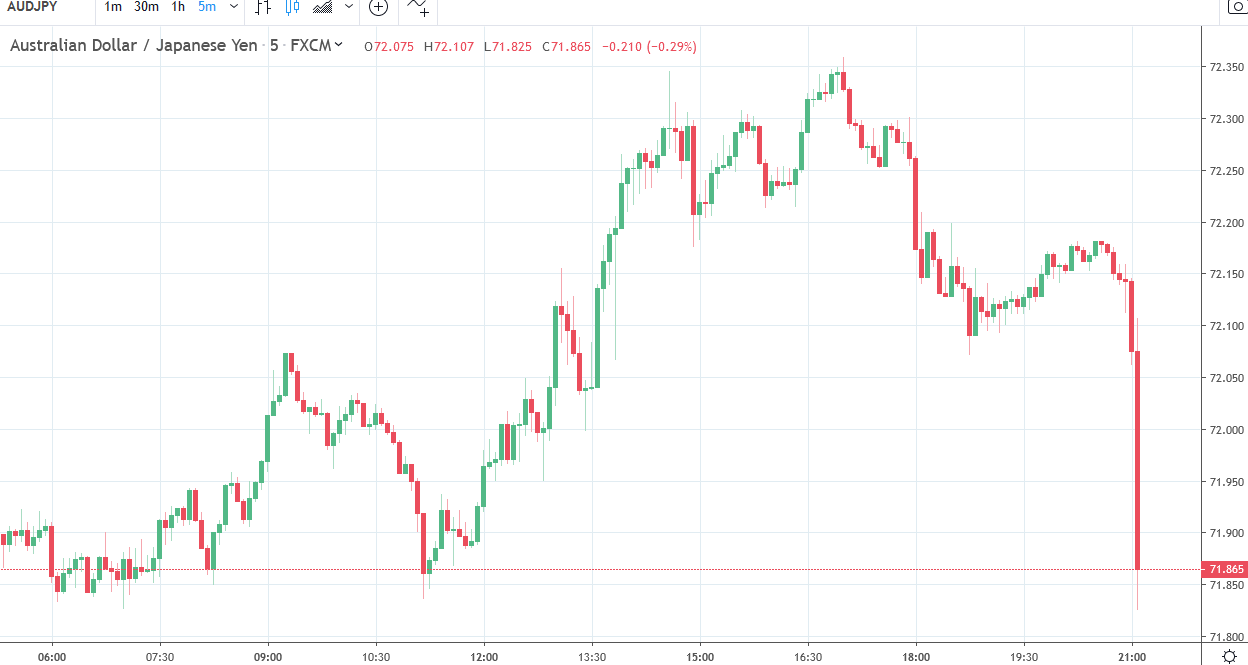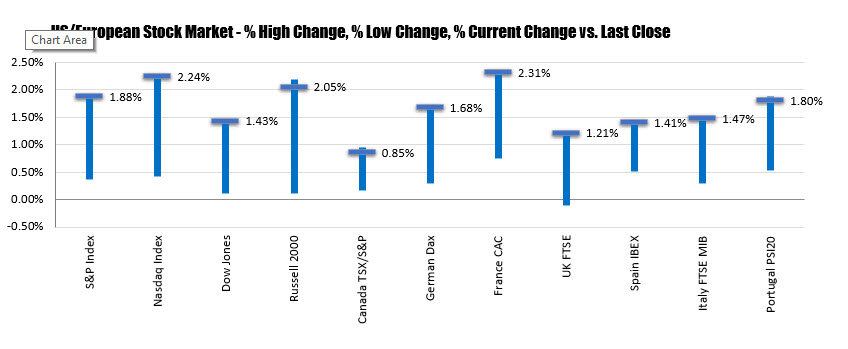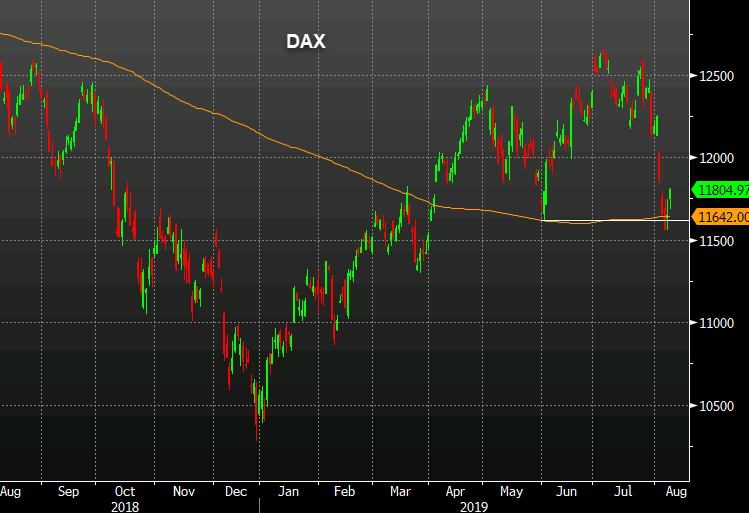
Italian Banks fall -4.1% and breaks uptrend from 2012



China’s central bank set its daily yuan reference rate at 7.0039 to the dollar Thursday, crossing the 7 line for the first time in roughly 11 years and signaling resolve even as the U.S. cries foul over the weakening currency.
Market participants speculate that Beijing may keep pushing the rate to around 7.2 to 7.3 so as to alleviate the impact of the next round of American tariffs.
But while a weaker yuan will help exporters impacted by the drawn-out trade war, the People’s Bank of China still must carefully balance these gains against the risks of runaway devaluation and capital flight.
The yuan can move only 2% in either direction from the daily reference rate on the mainland. So the rate, announced before trading starts each session, reflects the monetary authorities’ wishes.
The authorities want a gradual weakening of the yuan, said Ken Cheung, senior Asian foreign exchange strategist at Mizuho Bank.
The Trump administration just labeled China a currency manipulator Monday, after the yuan weakened past the psychological threshold of 7 in Shanghai. Setting reference rates past that line could trigger further pushback from the U.S. (more…)




